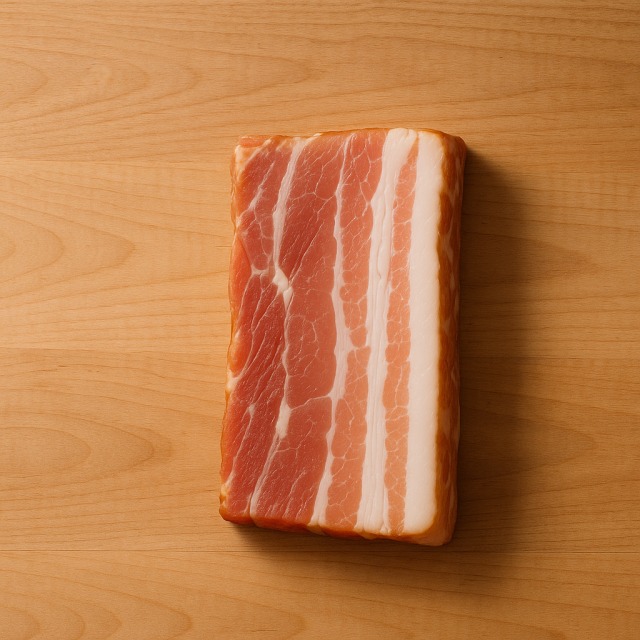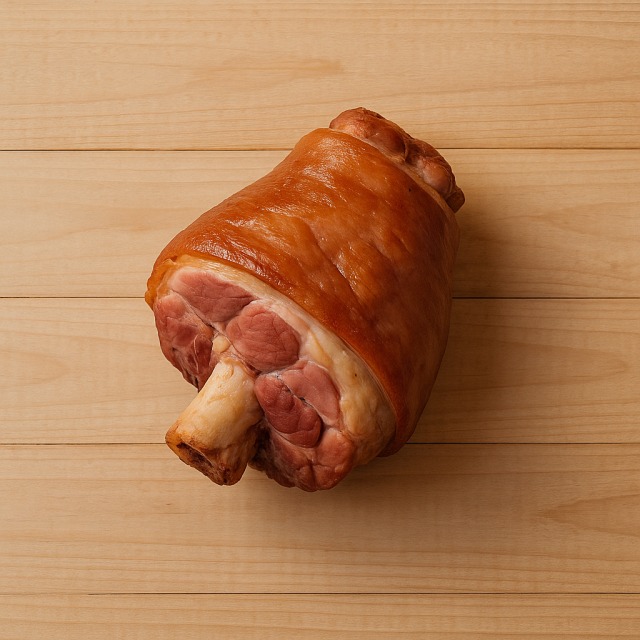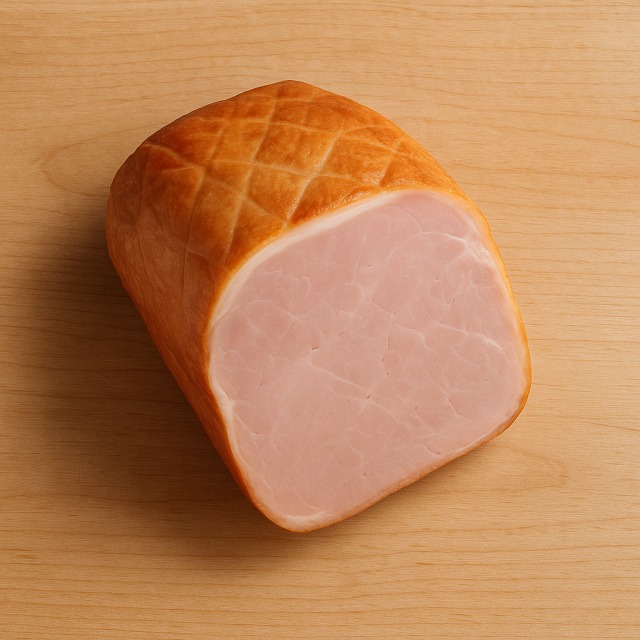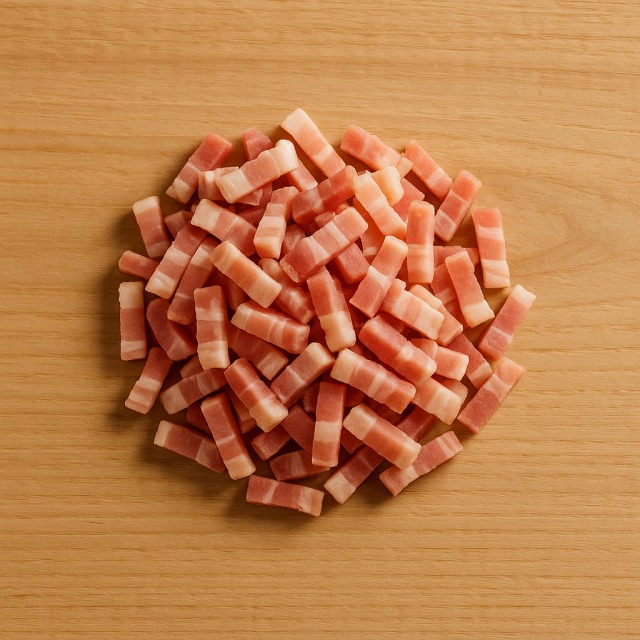Calorie Chart / Meat & Eggs / Pork belly
How Many Calories Are in Pork belly?
Calculation of the nutritional value & Recommended Dietary Intake of pork belly
For g and a calorie requirement of kcal
| Calories 201 kcal | Proteins 3 g | Lipids 21 g | Carbohydrates 0 g |
| 10% | 4% | 31% | 0% |
Health benefits of pork belly

Pork belly - 100g
Calories 670 kcal
Proteins 10 g
Lipids 70 g
Carbohydrates 0 g
Pork belly is one of the most energy-dense cuts of meat, delivering many calories in a very small volume; with 670 kcal per 100 g, it is definitely a high-calorie food. For anyone counting calories, even a modest slice can push the daily calorie tally up quickly. Athletes looking to bulk may appreciate those calories, while people aiming to slim down will need strict calorie monitoring.
Nutritionally, pork belly supplies useful amounts of B-group vitamins, especially thiamine (B1), niacin (B3), and vitamin B6, which help convert the very same calories into energy that the body can use. It also provides zinc, selenium, and phosphorus, minerals involved in immunity, antioxidant defenses, and bone health. Although its protein content (about 10 g/100 g) is moderate compared with lean cuts, the presence of collagen may contribute to skin and joint support—an effect that remains supposed rather than fully proven.
Historically, pork belly has been valued because its generous fat made it an efficient calorie reserve before refrigeration existed. In many cuisines, it is slow-cooked to render fat, then preserved as confit or cured into streaky bacon. These traditional methods underline its role as a naturally high-calorie, high-flavor ingredient.
Tips for incorporating pork belly into a balanced diet
The key to enjoying pork belly without letting calories spiral is portion control and smart pairings. Try roasting a 100 g slice until crisp, then serving it over a large bed of sautéed broccoli and fresh apple slivers; the fiber and volume help you feel satisfied while diluting overall calories per plate.
Another idea is Asian-style ramen: add thin strips of pork belly to a bowl of miso broth with buckwheat soba, steamed green beans, and a soft-boiled egg. Because the noodles and vegetables are low in fat, the dish keeps calories reasonable while still showcasing rich flavor.
If you need more protein but want to restrain calories, mix small crispy cubes of pork belly into a lentil salad made with warm lentils, herbs, and lemon juice. The legumes boost protein and slow-digesting carbs so that total calories remain balanced. Whatever the recipe, remember that most calories in pork belly come from fat; rendering part of that fat and discarding it before serving can shave off significant calories without sacrificing taste.
Frequently Asked Questions
- How many calories are in pork belly?
- There are 670 kcal per 100 g.
- Is pork belly suitable for a keto diet?
- Yes. Because its calories come almost entirely from fat (around 70 g) and it contains virtually no carbohydrates, pork belly fits well into a ketogenic approach—provided you still track calories to avoid overeating.
- How can I reduce the calories when cooking pork belly?
- Score the skin, slow-roast the meat on a rack, and collect the rendered fat in a tray. Discarding or repurposing that fat can cut the final calories on your plate by several dozen kcal.
- Does slow cooking change the calorie content?
- Slow cooking does not magically remove calories; it only redistributes fat. Any rendered fat left in the pot still holds the same calories that were in the raw meat, so remove excess drippings if you want to cut calories.
- Is pork belly good for muscle gain?
- The cut supplies around 10 g of protein per 100 g, which is modest, but its high calories and fat make it useful for athletes who struggle to eat enough calories during mass-gain phases. Combine it with leaner protein sources such as chicken breast to improve amino acid intake.
- How does pork belly compare with smoked bacon in calories?
- Smoked bacon is often derived from pork belly after curing and can contain similar or slightly higher calories per 100 g because of added salt and, occasionally, sugar. Always read the label, but expect a range of 650–700 kcal per 100 g for both products.
Similar foods
Information provided by Calorie Menu may contain inaccuracies or errors. It cannot, under any circumstances, substitute medical advice or medication.










